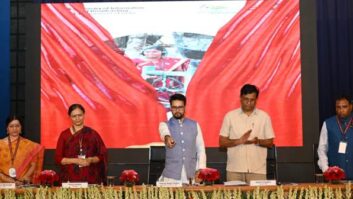The authors are CEO and membership program director of the National Federation of Community Broadcasters.
As Election Day gets closer and the rhetoric intensifies, it is impossible to escape the heat of the debates in community life. Community radio and low-power FM can play a powerful role in how conversation are framed at the local level, and in doing so provide valuable lessons to the larger media industry.
Take for instance Mount Vernon, Wash., a city whose Latino population grew more than 8 percent in 10 years, and which ebbs and flows as farmworkers come in for harvest season. For producers at KSVR(FM), the community conversation they are engaging with is all about the presidential election.
Plaintive voices reflect back what listeners are telling hosts and reporters. The tone of the campaign has listeners feeling agitated and afraid. Much of the station’s programming is in Spanish or is geared to address the needs of its Latino residents. Donald Trump’s remarks during his presidential announcement speech, equating Mexican immigrants with rapists and drug runners, has the station’s audience on edge. KSVR’s media makers are seeking a way for the audience to express those worries, as well as their idealism for what America is and can/should be.
Boisterous talk of building walls and mass deportation has real-world implications in communities like Mount Vernon. The Southern Poverty Law Center, long a tracker of hate activity, has covered the surge of white supremacist activity nationwide during this election cycle. Hate crimes have increased. For the community (and KSVR’s producers), these issues are more than a three-minute news story. The divisive political climate affects neighbors, children and workers, and strains the heart of the communities they live in.
In Mount Vernon, and in countless other areas, producers are taking microphones into the streets to let residents talk about what’s happening and how it colors their lives. Community radio today, and throughout its history, relies on passionate makers, local connections, and a careful attention to the craft of transformational storytelling.
Low-power FM and community radio have had a reputation for being eclectic and freeform for generations. Some in radio dismiss these outlets, but their formats are perfectly situated for this social media based media landscape. Consider community radio a Snapchat Stories for legacy media: Engaged people in our regions help us all get a sense of the story, and curators in those areas bring you the best. It’s not as controlled, and the audience likes it that way for its rawness and honesty.
Large stations can learn a great deal from these media institutions.
As the media industry struggles with questions of how to expand diversity and stimulate audience growth, social media has connected with the public’s desire for authentic interactivity. Community radio is cleverly demonstrating this kind of engagement can be alive in our neighborhoods too.
How community radio reports on the election depends upon its engagement efforts, community connections and a firm commitment to people relating their own experiences in their own voice. Because of these factors, community radio is poised as few others are to cover the story beneath the story of the fight for the White House and renewed culture wars.
Like KSVR in Mount Vernon, those conversations can be difficult, but without them there is little hope in fulfilling the promise of a free press or a living democracy.
Opinions are the authors’ own. Comment on this or any story below or email [email protected].










